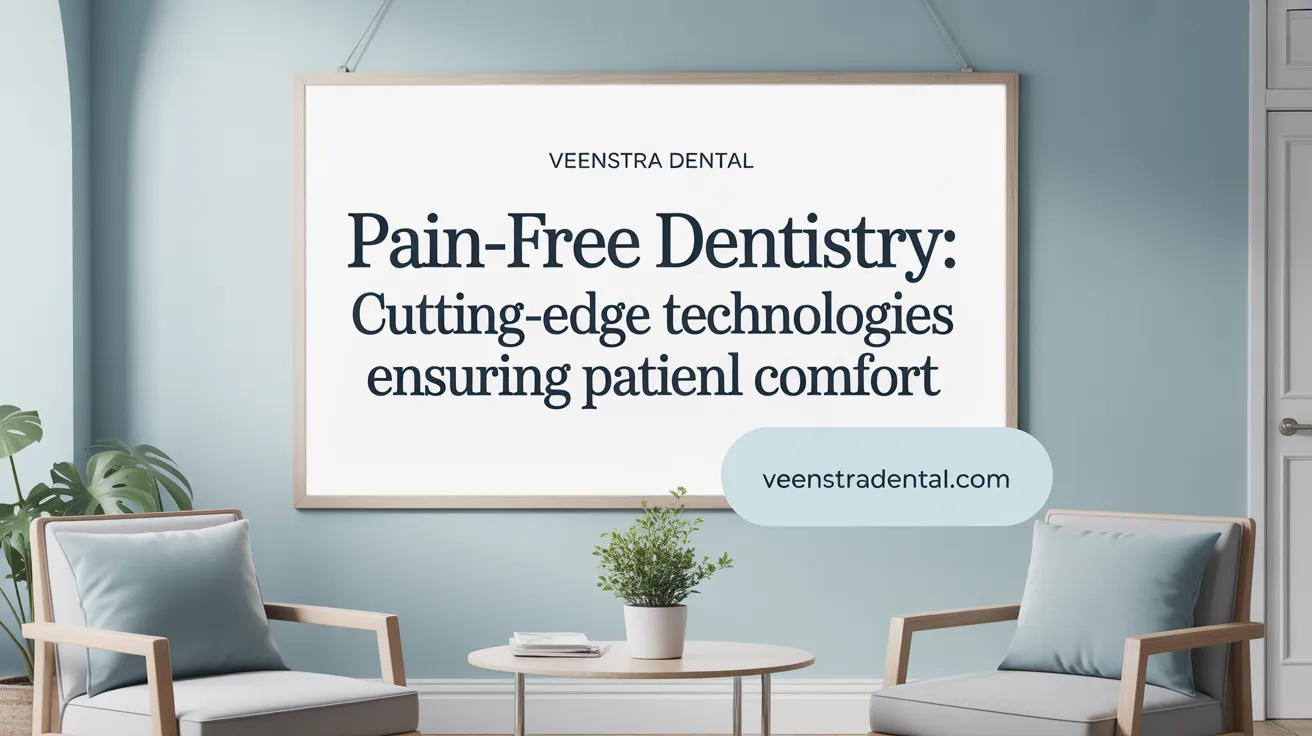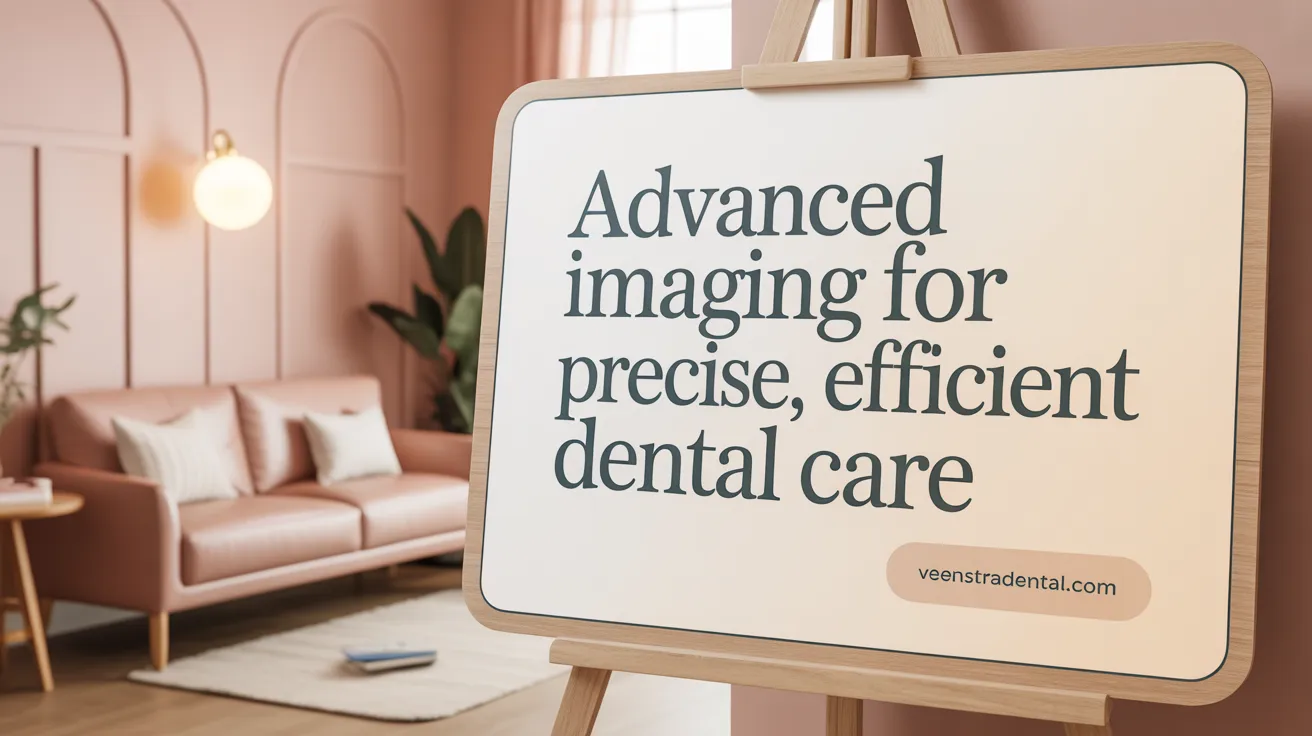Understanding Gentle Dentistry in the Modern Era
Gentle dentistry represents a transformative approach in dental care, leveraging cutting-edge technology to deliver pain-free, minimally invasive, and highly precise treatments. Today’s dental professionals integrate advanced tools and innovative techniques to not only improve treatment outcomes but also significantly enhance patient comfort and safety. This article explores the modern technologies behind gentle dentistry, illustrating how these advancements make dental visits less stressful and more effective for patients of all ages.
Transformative Technologies Enhancing Pain-Free Dental Care

What are some modern dental technologies that enhance gentle, pain-free care?
Modern dental practices incorporate a range of advanced tools and techniques to make dental visits more comfortable and less invasive. Laser dentistry, for example, uses focused light beams to perform procedures such as cavity removal and gum treatments with minimal discomfort. This technology often results in faster healing and less need for anesthesia.
Digital imaging methods like digital X-rays and 3D scanners allow dentists to diagnose issues accurately while exposing patients to significantly less radiation. These tools enable precise treatments that are less intrusive, reducing recovery times and discomfort.
Intraoral cameras provide detailed images of the mouth, helping clinicians spot problems early and plan targeted treatments. Digital impressions, created by advanced scanners like the iTero Element, eliminate the need for messy molds and result in more comfortable, accurate restorations.
To address pain and anxiety, dental offices are now using advanced anesthesia techniques. Computer-assisted delivery systems, topical numbing gels, and various sedation options such as nitrous oxide and IV sedation ensure patients remain comfortable throughout procedures. These options are particularly beneficial for those with dental anxiety or sensitive teeth.
Innovations like same-day crowns, produced using CAD/CAM technology, enable quick, precise restorative work in a single appointment, reducing multiple visits and the associated discomfort. Computer-guided surgery enhances the accuracy of complex procedures such as implant placement, further minimizing trauma.
Together, these technologies focus on creating a gentle, stress-free dental experience. They facilitate early detection of dental issues, precise treatment planning, and execution—all while improving patient comfort and safety.
| Technology | Application Area | Benefits |
|---|---|---|
| Laser Dentistry | Soft tissue procedures, cavity removal | Reduced discomfort, faster healing |
| Digital X-Rays & 3D Scanners | Diagnosis, treatment planning | Less radiation, higher accuracy, less invasive |
| Intraoral Cameras | Diagnostics | Better visualization, less discomfort |
| Digital Impressions | Restorations | No molds, quicker, more precise |
| Advanced Anesthesia | Pain and anxiety management | Minimized pain, greater comfort |
| Same-Day Crowns & CAD/CAM | Restorative dentistry | Fewer visits, faster treatment |
| Computer-Guided Surgery | Implants, complex surgeries | Enhanced precision, less trauma |
The continuous integration of these advanced technologies underscores a commitment to patient-centered care. They not only improve outcomes but also ensure that dental visits are as comfortable and stress-free as possible, embodying the modern approach to gentle, pain-free dentistry.
Advanced Tools and Techniques: Elevating Comfort and Safety

How do advanced tools and techniques improve patient comfort and safety in contemporary dentistry?
Modern dental practices incorporate a range of innovative tools and methods that significantly boost patient comfort and safety. For example, laser dentistry enables minimally invasive procedures, reducing bleeding, tissue trauma, and recovery times. Instead of traditional drills, laser treatment offers a nearly pain-free experience with less need for anesthesia.
Digital impressions, using high-precision scanners like the iTero Element, create accurate 3D images of teeth and gums. This process is far more comfortable than traditional molds, eliminating gagging and discomfort. Digital imaging technologies such as digital X-rays and intraoral cameras provide detailed visuals with less radiation exposure and quicker diagnostics, reducing the likelihood of repeated procedures and associated risks.
CAD/CAM systems facilitate same-day restorations, including crowns and veneers, with highly precise digital impressions. This not only speeds up treatment but also minimizes errors and the need for multiple visits.
Advanced imaging tools like 3D imaging help in meticulous treatment planning for complex procedures, ensuring safety and effectiveness. Additionally, sedation methods like nitrous oxide, oral conscious sedation, or IV sedation help anxious patients remain relaxed and comfortable throughout their visits.
Enhanced sterilization protocols and infection control measures, supported by modern sterilizers and digital record-keeping, greatly reduce infection risks. These technological advancements make dental visits safer and more pleasant.
By combining technological precision with patient-centered approaches, modern dentistry creates a safer, more comfortable environment, catering to individual needs and alleviating fears associated with dental care. Overall, these innovations contribute to a smoother, less stressful experience and better clinical outcomes.
The Crucial Role of Digital Radiography and 3D Imaging in Diagnosis and Treatment

What specific role do digital radiography and 3D imaging play in modern dental treatments?
Digital radiography and 3D imaging have revolutionized the way dentists diagnose and plan treatments. These technologies provide clear, detailed images of the mouth’s structures with significantly less radiation than traditional X-rays. This allows for safer, quicker diagnoses, enabling dental professionals to assess the condition of teeth, bones, and soft tissues accurately.
One of the most important advancements is Cone-Beam Computed Tomography (CBCT). CBCT offers three-dimensional views, giving a comprehensive perspective that is critical for complex procedures like dental implant placement, orthodontics, and root canal therapy. These detailed images help clinicians evaluate bone density, nerve locations, and surrounding tissue, reducing the risk of complications.
Digital images are easy to share among practitioners and are often superimposed with computer software, allowing for precise treatment planning. This seamless integration supports better communication with patients, who can see visualizations of their condition and recommended procedures.
Artificial intelligence (AI) is increasingly integrated into imaging systems, helping identify patterns, predict outcomes, and improve diagnostic accuracy. AI-driven analysis can flag early signs of decay or gum disease, assisting dentists in making more informed decisions.
Beyond imaging, innovations like in-office 3D printing and virtual reality further enhance treatment workflows. Digital impressions captured by advanced scanners are used to create precise models for crowns, bridges, and orthodontic devices on the same day. Virtual reality tools enable immersive planning, especially useful in complex surgeries.
Overall, these cutting-edge imaging techniques and digital tools empower dental professionals to deliver safer, more precise, and personalized care, leading to better patient experiences and outcomes.
Laser Dentistry and Digital Scanning: Pillars of Comfort and Precision
How does laser dentistry contribute to less stressful and more comfortable dental treatments?
Laser dentistry plays a significant role in making dental treatments less stressful for patients. By utilizing advanced light-based technology, laser procedures are often minimally invasive, reducing or eliminating the need for traditional drills, scalpels, or anesthesia. The precision of laser energy causes less bleeding, swelling, and tissue damage, resulting in a more comfortable experience during procedures.
Patients benefit from faster healing times and decreased postoperative pain. This technology is especially suitable for anxious or sensitive individuals, as it minimizes discomfort and reduces treatment durations. Overall, laser dentistry creates a calmer, more gentle environment that enhances patient satisfaction and encourages regular dental visits.
In what ways do digital impressions and dental scanners improve dental procedures?
Digital impressions and dental scanners have revolutionized oral healthcare by providing accurate 3D images of a patient’s mouth. These high-resolution digital tools allow dentists to design and create restorations, orthodontic appliances, and implants more precisely.
The process is faster and more comfortable compared to traditional molds, which involve gooey impression materials that many patients find unpleasant. Digital scans are quick, non-invasive, and eliminate the need for retakes, streamlining the workflow.
These technologies also improve communication between dental teams and laboratories, enabling clearer treatment planning and better results. Additionally, digital impressions reduce waste and foster environmentally friendly practices. Overall, they enhance clinical outcomes, increase patient comfort, and improve the efficiency of dental procedures.
How do technologies like the Wand anesthesia system support pain-free dental care?
The Wand anesthesia system exemplifies how modern technology supports pain-free dentistry. It offers a computer-controlled, highly precise method of delivering local anesthesia, which significantly minimizes discomfort during injections. The system’s sensors regulate the flow rate and pressure of the anesthetic, ensuring a slow, steady administration.
Its pen-like design reduces the intimidating aspect of traditional needles, helping anxious patients feel more at ease. The targeted delivery allows for effective numbing of specific teeth while avoiding unnecessary numbness of broader areas. Recovery times are faster, and patients often report less pain overall. Technological innovations like the Wand are transforming dental care into a more comfortable, less intimidating experience for everyone.
| Technology | Application | Benefit | Additional Details |
|---|---|---|---|
| Laser Dentistry | Soft tissue treatment, cavity preparation | Minimal discomfort, faster healing | Uses focused light beams for precise procedures |
| Digital Radiography | Imaging with less radiation | Quicker diagnosis with detailed images | Digital X-rays provide high clarity with reduced exposure |
| Dental Scanners | 3D imaging | Accurate digital impressions | Converts physical molds into digital models |
| CAD/CAM | Restorations and prosthetics | Faster, precise fabrication | Enables same-day crown and veneer creation |
| Wand System | Anesthesia delivery | Painless injections | Computer-controlled, precise anesthesia |
Modern dental tools such as laser devices, digital imaging, and advanced anesthesia systems are reshaping patient care. They prioritize comfort while ensuring high-quality, accurate treatments that meet the needs of today’s health-conscious and anxiety-prone patients.
Scientific Principles and Impact of Technological Advancements on Dental Care
How have recent technological advancements impacted the quality of dental treatment and patient experience overall?
Recent developments in dental technology have significantly elevated the standards of care and patient satisfaction. Advanced imaging tools like digital X-rays and 3D scanners allow for early and accurate diagnosis with less radiation, leading to safer and more precise treatments. Minimally invasive procedures, such as laser dentistry and air abrasion systems, reduce discomfort, bleeding, and healing times.
Digital impressions and CAD/CAM technology enable same-day restorations, making treatments faster and more comfortable. Sedation options like nitrous oxide and oral conscious sedation help patients with dental anxiety relax during procedures.
Modern clinics incorporate virtual consultations and digital planning, making dental care more accessible and tailored to individual needs. Ergonomic treatment environments and advanced pain management techniques further enhance patient comfort. Overall, these technological gains have made dental visits more efficient, less painful, and more effective.
| Technology Type | Benefit | Impact on Patient Care |
|---|---|---|
| Digital radiography | Clear images, less radiation | Faster, safer diagnoses |
| Laser dentistry | Precise, minimally invasive procedures | Less pain, quicker healing |
| 3D imaging & intraoral cameras | Better visualization, early detection | More accurate treatment plans |
| CAD/CAM & Digital Impressions | Custom, rapid restorations | Shorter treatment times, better fit |
| Sedation options | Reduced anxiety, pain management | Patients more willing to undergo treatment |
What is the science behind modern dental technologies and how do they ensure safety during procedures?
Modern dental tools derive from scientific fields like optics, materials science, and biophysics. Imaging technologies such as digital X-rays and cone beam computed tomography (CBCT) use advanced sensors and algorithms to produce highly detailed images with minimal radiation, following the ALARA (As Low As Reasonably Achievable) principle to protect patients.
Laser dentistry employs focused light energy (from diode, erbium, or CO2 lasers) that interacts with tissues via photothermal, photochemical, or mechanical reactions. This allows precise removal of decay and tissue modification with less bleeding and a lower risk of infection.
Sterilization protocols, including autoclaving and surface disinfectants, along with personal protective equipment like gloves and masks, prevent cross-contamination. Digital records and AI-driven diagnostic tools foster transparency and ongoing safety monitoring.
This blend of scientific innovation and rigorous safety standards ensures treatments are both effective and secure, maintaining high trust in dental procedures.
| Technology Type | Scientific Principle | Safety Protocols & Measures | Additional Notes |
|---|---|---|---|
| Digital X-rays & CBCT | Imaging physics, sensors | ALARA, protective aprons | Reduced radiation exposure |
| Laser dentistry | Light-matter interaction (photons with tissue) | Eye protection, calibrated devices | Minimally invasive, sterilized equipment |
| Sterilization systems | Microbiology, sterilization techniques | Autoclaving, disinfectants | Infection control is prioritized |
| Sedation methods | Pharmacology, anesthesia science | Monitoring equipment, trained personnel | Ensures comfort and reduces movement during procedures |
Modern dental innovations are rooted in rigorous scientific research, and their safe application relies on strict adherence to safety protocols and continuous professional training, ensuring optimal outcomes for patients.
The Future of Gentle Dentistry Powered by Innovation
As technological innovation continues to advance, gentle dentistry stands poised to deliver even more personalized, comfortable, and effective care. The integration of artificial intelligence, regenerative treatments, and robotic-assisted procedures promises to further revolutionize patient experience and treatment outcomes. Ultimately, modern dental technologies not only improve the clinical precision and safety of dental care but also transform how patients perceive and experience dentistry, fostering trust and making oral health maintenance a less daunting, more accessible journey for all.
References
- Embracing Comfort: How Modern Technology Transforms Dental ...
- Redefining Patient Comfort: The Rise of Gentle Dentistry ...
- What Makes Pain-Free Dental Visits the New Standard of ...
- The Role Of Modern Dentistry In Your Oral Health Journey
- Crafting Comfort: The Gentle Approach to Dental Care
- New Dental Technologies - Azusa - Gentle Care Dentistry
- The Role of Technology in Modern Dentistry
